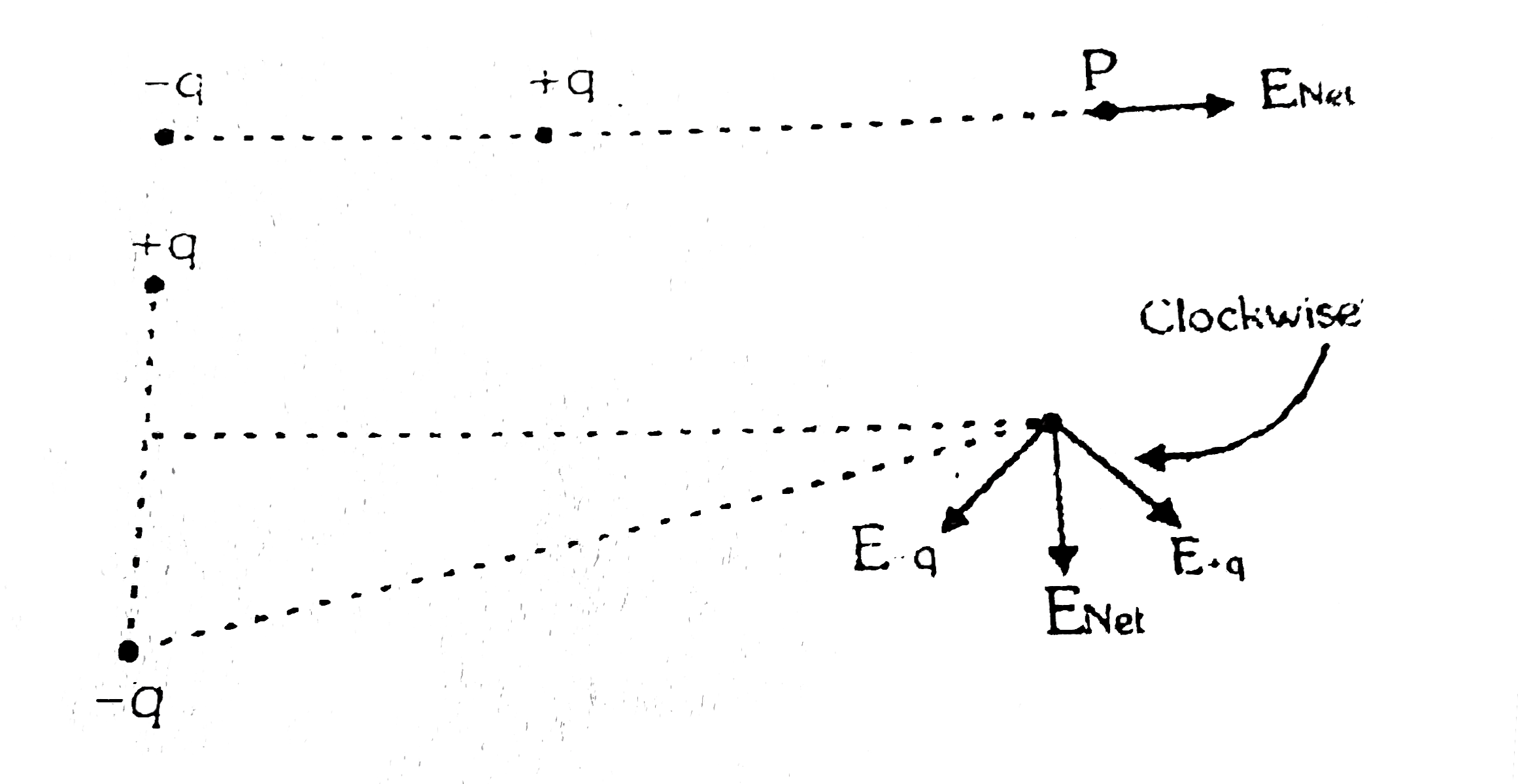Point P lies on the axis of a dipole . If the dipole is rotated by 90∘ anti-clock wise , the electric field vector →E at P will rotate by .Solution in Gujrati
The correct Answer is:A
Topper's Solved these Questions
- MISCELLANEOUSBOOK - ALLEN CHAPTER - MISCELLANEOUSEXERCISE - Exercise-03
1 Videos
- MISCELLANEOUSBOOK - ALLEN CHAPTER - MISCELLANEOUSEXERCISE - Exercise-04
1 Videos
- MISCELLANEOUSBOOK - ALLEN CHAPTER - MISCELLANEOUSEXERCISE - Exersice -05(B)
20 Videos
- KINEMATICS (MOTION ALONG A STRAIGHT LINE AND MOTION IN A PLANE)BOOK - ALLEN CHAPTER - KINEMATICS (MOTION ALONG A STRAIGHT LINE AND MOTION IN A PLANE)EXERCISE - BEGINNER S BOX-7
8 Videos
- PHYSICAL WORLD, UNITS AND DIMENSIONS & ERRORS IN MEASUREMENT BOOK - ALLEN CHAPTER - PHYSICAL WORLD, UNITS AND DIMENSIONS & ERRORS IN MEASUREMENT EXERCISE - EXERCISE-IV
7 Videos
Similar Questions
Two parallel metallic plates have surface charge densities σ1 and σ2 as shown in figure.

Column-IColumn-II(A)If σ1+σ2=0(p)Electric field in region III is towards right(B)Ifσ1+σ2>0(q)Electric field in region I is zero(C)If σ1+σ2<0(r)Electric field in region I is towards roght(s)Nothing can be said
View SolutionIn each situation of Column-I two elelctric dipoles having moments →p1 and →p1 of same magnitude (that is ,p1=p2) are placed on x-axis symmetrically about origin in different orientations as shown. In column-II certain inferences are drawn for these two dipoles. Then match the different orientations of dipole in column-I with the corresponding result in column-II.

View SolutionPlanck's constant has dimensions …………….
View SolutionA football player kicks a ball at an angle of 30∘ with an initial speed of 20 m/s. Assuming that the ball travels in a vertical plane, calculate (a) the time at which the ball reaches the highest point (b) the maximum height reached (c) the horizontal range of the ball (d) the time for which the ball is in the air, (g=10m/s2)
View SolutionAssertion : Gravitational forces do not depend on the medium between the masses.
Reason : Mediating particle responsible for gravitational force is graviton.
View SolutionAn electric dipole of moment →P is lying along a uniform electric field →E. The work done in rotating the dipole by 90∘ is:
View SolutionPoint P lies on the axis of a dipole . If the dipole is rotated by 90∘ anticlock wise , the electric field vectro →E at P will rotate by .
View Solutionएकसमान वैधुत क्षेत्र →E में रखे वैधुत द्विध्रुव आघूर्ण →P वाले वैधुत द्विध्रुव को 90∘ से घुमाने में कृत कार्य है :
View Solutionएकसमान विद्युत् क्षेत्र E में किसी द्विधुव (द्विधुव आघूर्ण = p) को क्षेत्र की दिशा से 180° कोण घुमाने में किया गया कार्य होगा :
View SolutionA short electric dipoleis placed along y-axis at the origin. The electric field vector at a point P on x-axis is vec(E ) _(1) . The dipole is rotated by ( pi)/(2) at its positin . Now, the electric field vector at point P is vec(E )_(2) . Select the correct alternative(s) :
View SolutionThe electric field intensity →E , , due to an electric dipole of dipole moment →p , at a point on the equatorial line is :
View SolutionWhen dipole moment vec(P) of a dipole is anti parallel to electric field intensity vec(E ) (unstable equilibrium), the potential energy of dipole is
View SolutionAn electric dipole of dipole moment p is aligned parallel to a uniform electric field E. the energy required to rotate the dipole by 90^(@) is
View Solutionआघूर्ण p वाले किसी विधुतीय द्विध्रुव को समरूप विधुतीय क्षेत्र E की दिशा से 90∘ से घूर्णित करने में किया गया कार्य होगा (An electric dipole of moment p is lying along a uniform electric field E. The work done in rotating the dipole by 90∘ is) -
View SolutionAn electric dipole of moment p is lying along a uniform electric field →E. The workdone in rotating the dipole by 90∘ is
View SolutionAn electric dipole of moment →P is placed in a uniform electric field →E such that →P points along →E . If the dipole is slightly rotated about an axis perpendicular to the plane containing →Eand→P and passing through the centre of the dipole, the dipole executes simple harmonic motion. Consider I to be the moment of inertia of the dipole about the axis of rotation. What is the time period of such oscillation ?
View Solution

